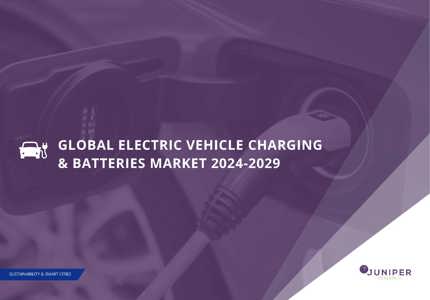The Road to EV Charging Adoption
Success of EVs Dependent on Charging Infrastructure
While EVs (Electric Vehicles) have been developed since 1884, when the first production electric car was launched, it is only in the last five years that these EVs have become a genuine contender for consumers when picking their next vehicle. However, the future success and viability of EVs is largely dependent on the infrastructure to charge them.
A Multitude of Charging Stations
There are numerous different form factors for charging stations. These will be introduced and analysed below.
- Home Wallbox: This type of charger is generally fitted at home, so a user can charge their EV overnight. These types of chargers require parking which is directly next to the property. This is not an issue with most houses, but flats/apartments frequently lack this. As such, ensuring that those in urban environments can still charge vehicles is a big imperative for infrastructure roll-outs.
- Public Charging: There are various types of public chargers in service. Most tend to be featured in destinations, such as car parking areas, restaurants, and fuelling stations.
- Workplace Charging: This is where charging is made available at a place of work, either to charge personal vehicles of staff, or leased company vehicles.
- Fleet Charging: This will involve the charging of commercial vehicles, including vans, buses and trucks. This will often happen at depots, and will require more heavy-duty chargers than other use cases, given the higher battery capacities of many commercial vehicles.
A Design in Evolution
As EVs become more common, changes in their design are having an impact on the charging infrastructure that is required. For example, Hyundai and Kia have launched a new EV platform, called E-GMP, which has powered cars such as the Hyundai Ioniq 5 and the Kia EV6. This platform enables these EVs to theoretically charge at a rate of 62 miles in 5 minutes. However, this requires a charging rate of 220 kW. The Porsche Taycan also supports this, as will many other vehicles over the coming months and years. The issue is that at the time of writing, there were only 15 chargers capable of this charging rate within the whole of the UK, with none at all in Northern Ireland or Wales.
Charging and Plug Standards a Challenge to Adoption
As such, it is not just the number of chargers, it is the level of charging they support that is also important. Ultimately, EVs have difficult standards to meet – not only in terms of charging speed, but the actual charging technology involved. Manufacturers need to come together and agree on common technologies in order drive the market forward.
When discussing a lack of standards in the charging market, something as simple as what plugs are used to access charging in different vehicles is an issue. This is both a problem internationally and in specific markets. The fact that different cables need to be used for AC and DC charging means that there is a certain amount of user confusion. It also means that there is a lot of complexity in terms of which charging stations cars can use. In practice, this often means vehicles carrying and being sold with multiple cables. There are however signs that this fraught issue is reducing in terms of difficulty.
► EV Charging Market Research
Our latest research found:
- The global transaction volume of in-vehicle payments will exceed 4.7 billion by 2026, up from just 87 million in 2021.
- This extraordinary growth of over 5,300% in the next 5 years will be driven by increasing industry collaboration and initiatives from vehicle manufacturers, aimed at reducing the high level of fragmentation between different in-vehicle marketplaces.
- North America will have the largest in-vehicle payments share of transactions by volume; accounting for 42% of all transactions globally by 2026.
- Vehicle fuelling will be the most common use case over the next 5 years; accounting for around 48% of total in-vehicle payment transactions by volume. This growth is being seen as the natural progression for fuel payments.
FIND OUT MORE: EV CHARGING: KEY OPPORTUNITIES, CHALLENGES & MARKET FORECASTS 2021-2026
Latest research, whitepapers & press releases
-
 ReportDecember 2025
ReportDecember 2025AI Agents for Customer Experience Platforms Market: 2025-2030
Our comprehensive AI Agents for Customer Experience Platforms research suite comprises detailed assessment of a market that is set to disrupt mobile communications. It provides stakeholders with insight into the key opportunities within the AI agents for customer experience platforms market over the next two years.
VIEW -
 ReportDecember 2025Fintech & Payments
ReportDecember 2025Fintech & PaymentseCommerce Fraud Prevention Market: 2025-2030
Our eCommerce Fraud Prevention research suite provides a detailed and insightful analysis of this evolving market; enabling stakeholders from financial institutions, law enforcement agencies, regulatory bodies and technology vendors to understand future growth, key trends, and the competitive environment.
VIEW -
 ReportNovember 2025Telecoms & Connectivity
ReportNovember 2025Telecoms & ConnectivityeSIMs & iSIMs Market: 2025-2030
Juniper Research’s eSIMs and iSIMs research suite offers insightful analysis of a market set to experience significant growth in the next five years. The research suite provides mobile network operators (MNOs), original equipment manufacturers (OEMs), and eSIM management and platforms vendors with intelligence on how to capitalise on the market growth, and guidance on how eSIM-only devices and sensors, SGP.42, in-factory provisioning, and iSIMs will change the competitive landscape.
VIEW -
 ReportNovember 2025Fintech & Payments
ReportNovember 2025Fintech & PaymentsModern Card Issuing Platforms Market: 2025-2030
Our Modern Card Issuing Platforms Market research suite provides a detailed and insightful analysis of this evolving market; enabling stakeholders from banks, financial institutions, fintech companies, and technology vendors to understand future growth, key trends, and the competitive environment.
VIEW -
 ReportNovember 2025Fintech & Payments
ReportNovember 2025Fintech & PaymentsDigital Wallets Market: 2025-2030
Our digital wallets research suite provides detailed analysis of this rapidly changing market; allowing digital wallet providers to gain an understanding of key payment trends and challenges, potential growth opportunities, and the competitive environment.
VIEW -
 ReportOctober 2025Fintech & Payments
ReportOctober 2025Fintech & PaymentsDigital Identity Market: 2025-2030
Juniper Research’s Digital Identity research suite provides a comprehensive and insightful analysis of this market; enabling stakeholders, including digital identity platform providers, digital identity verification providers, government agencies, banks, and many others, to understand future growth, key trends, and the competitive environment.
VIEW
-
 WhitepaperDecember 2025Telecoms & Connectivity
WhitepaperDecember 2025Telecoms & ConnectivityHuman + AI: Drivers of Customer Experience AI Agents in 2026
Our complimentary whitepaper, Human + AI: Drivers of Customer Experience AI Agents in 2026, examines the key drivers of the AI agents for customer experience platforms market in 2025.
VIEW -
 WhitepaperDecember 2025Fintech & Payments
WhitepaperDecember 2025Fintech & PaymentsBeyond Chargebacks: The True Cost of Fraud for Digital Commerce
Our complimentary whitepaper, Beyond Chargebacks: The True Cost of Fraud for Digital Commerce, examines the state of the eCommerce fraud prevention market; considering the impact of evolving digital fraud strategies, including key trends such as identity theft, account takeovers, chargebacks, policy abuse and friendly fraud.
VIEW -
 WhitepaperNovember 2025Telecoms & Connectivity
WhitepaperNovember 2025Telecoms & ConnectivityeSIM-only Devices: The Impact on Operators, Consumers, and IoT
Our complimentary whitepaper, eSIM-only Devices: The Impact on Operators, Consumers, and IoT, explores the challenges and opportunities for the three segments, with a particular focus on eSIM-only smartphones and SGP.42.
VIEW -
 WhitepaperNovember 2025Fintech & Payments
WhitepaperNovember 2025Fintech & PaymentsUnlocking the Next Stage of Growth for Modern Card Issuing Platforms
This free whitepaper analyses key trends shaping the modern card issuing space, and the ways in which modern card issuing platforms can capture growth.
VIEW -
 WhitepaperNovember 2025Fintech & Payments
WhitepaperNovember 2025Fintech & PaymentsTop 10 Fintech & Payments Trends 2026
Fintech is evolving fast. From stablecoins to agentic AI, our annual guide reveals the shifts redefining payments, digital identity, and the future of money in 2026. Download your copy today.
VIEW -
 WhitepaperNovember 2025Fintech & Payments
WhitepaperNovember 2025Fintech & PaymentsDigital Wallets: Empowering Financial Inclusivity
Our complimentary whitepaper, Digital Wallets: Empowering Financial Inclusivity, examines the state of the digital wallets market; considering the impact of digital wallets on different geographies, how they are shaping the modern payments landscape through lower transaction fees and promoting financial inclusivity for underbanked populations, and how they are competing with established payment methods.
VIEW
-
IoT & Emerging Technology
Juniper Research Unveils Top 10 Emerging Tech Trends to Watch in 2026
January 2026 -
Fintech & Payments
Digital Identity App Usage to Hit 6.2 Billion by 2030, Driven by Shift to Decentralised Models
December 2025 -
Telecoms & Connectivity
Travel eSIM Margins Under Pressure as Revenue per Gigabyte Falls 10% Globally in Two Years
December 2025 -
Telecoms & Connectivity
AI Agents to Power 1,000% More Customer Interactions for Enterprises Globally by 2027
December 2025 -
IoT & Emerging Technology
Global D2C Revenue Set for $370 Million Surge, But Satellite Operators Should Not Chase Full MNO Status
December 2025 -
Fintech & Payments
Digital Goods Fraud to Cost eCommerce Merchants $27 Billion Globally by 2030 as AI Tools Accelerate Attacks
December 2025





















